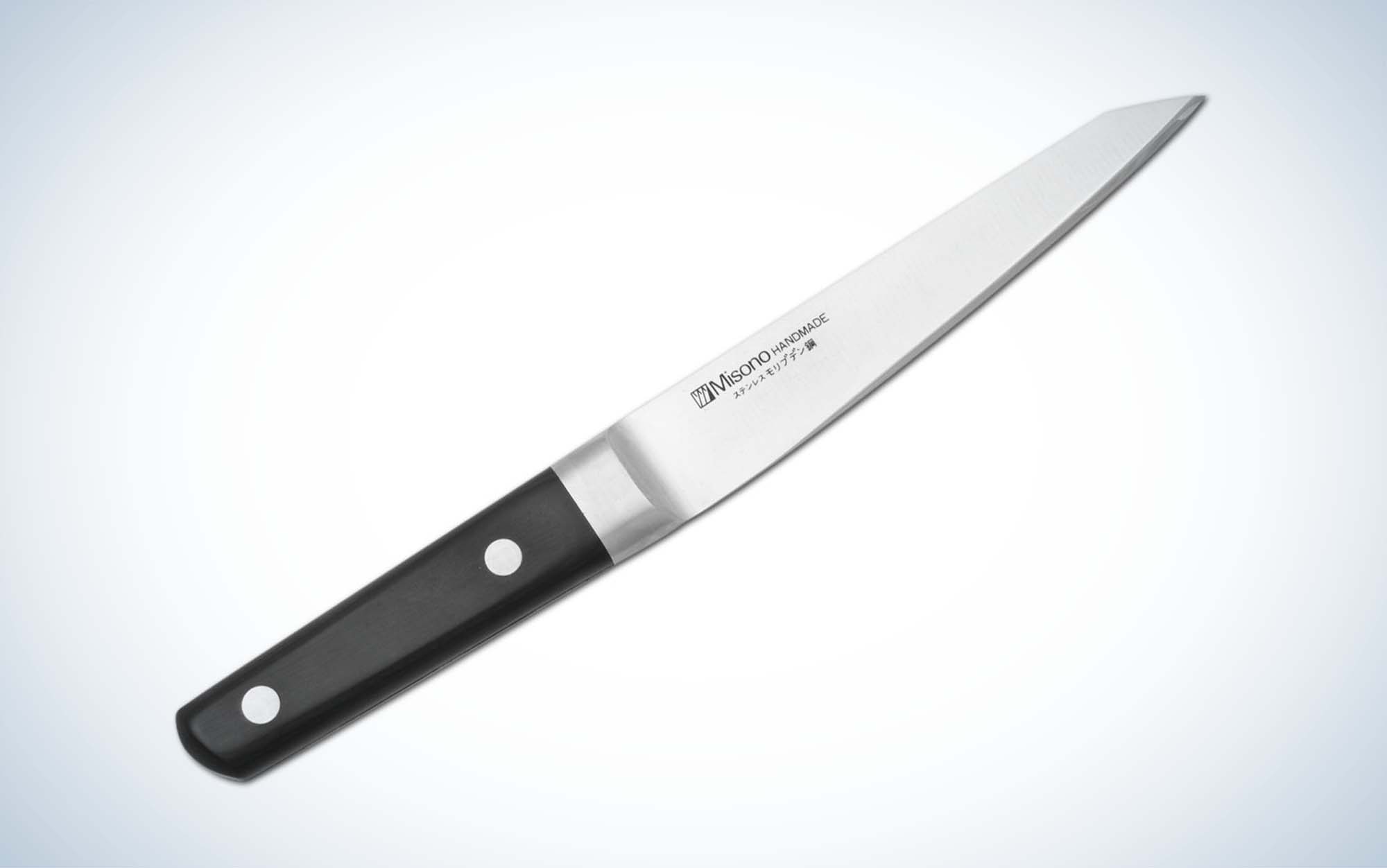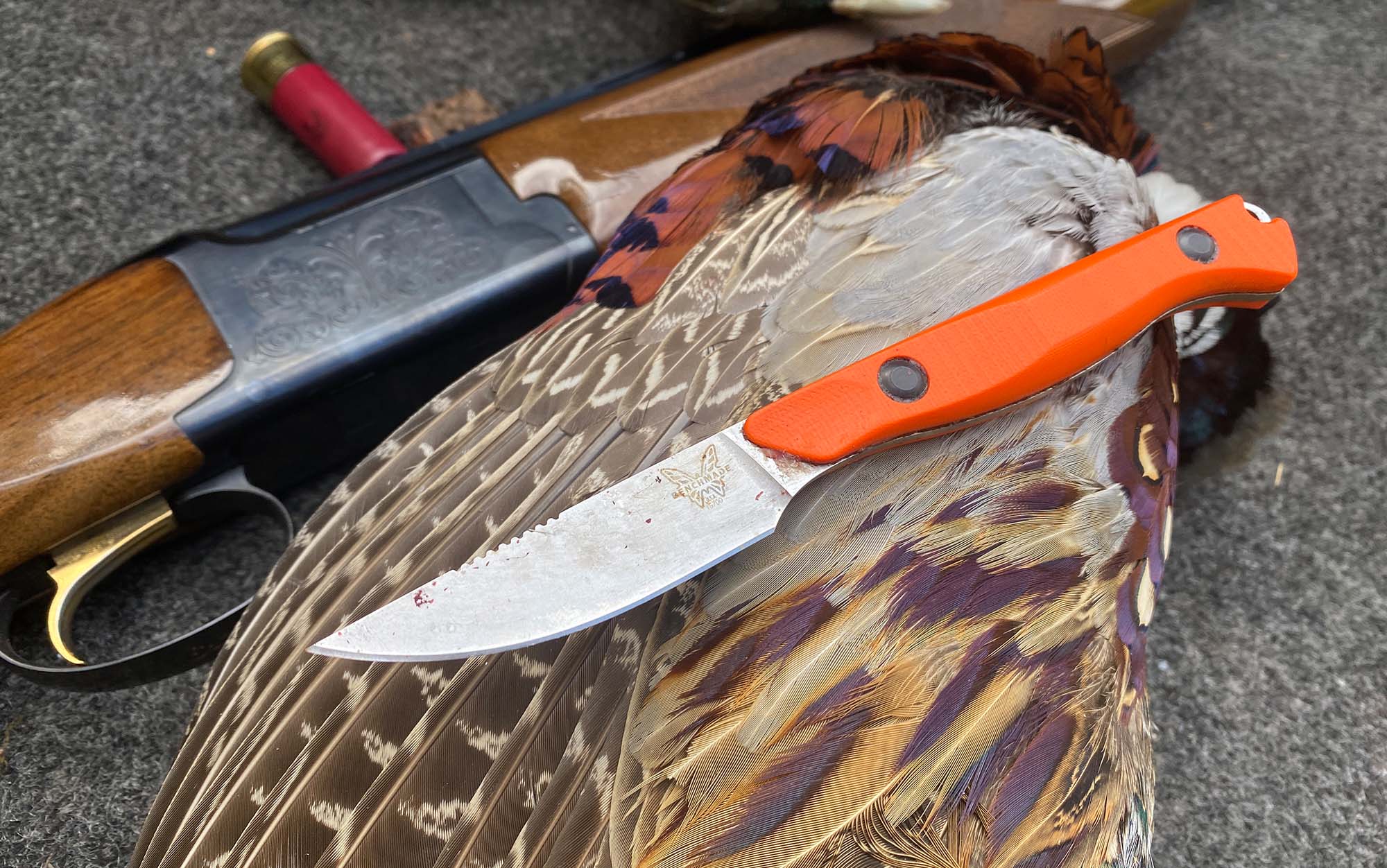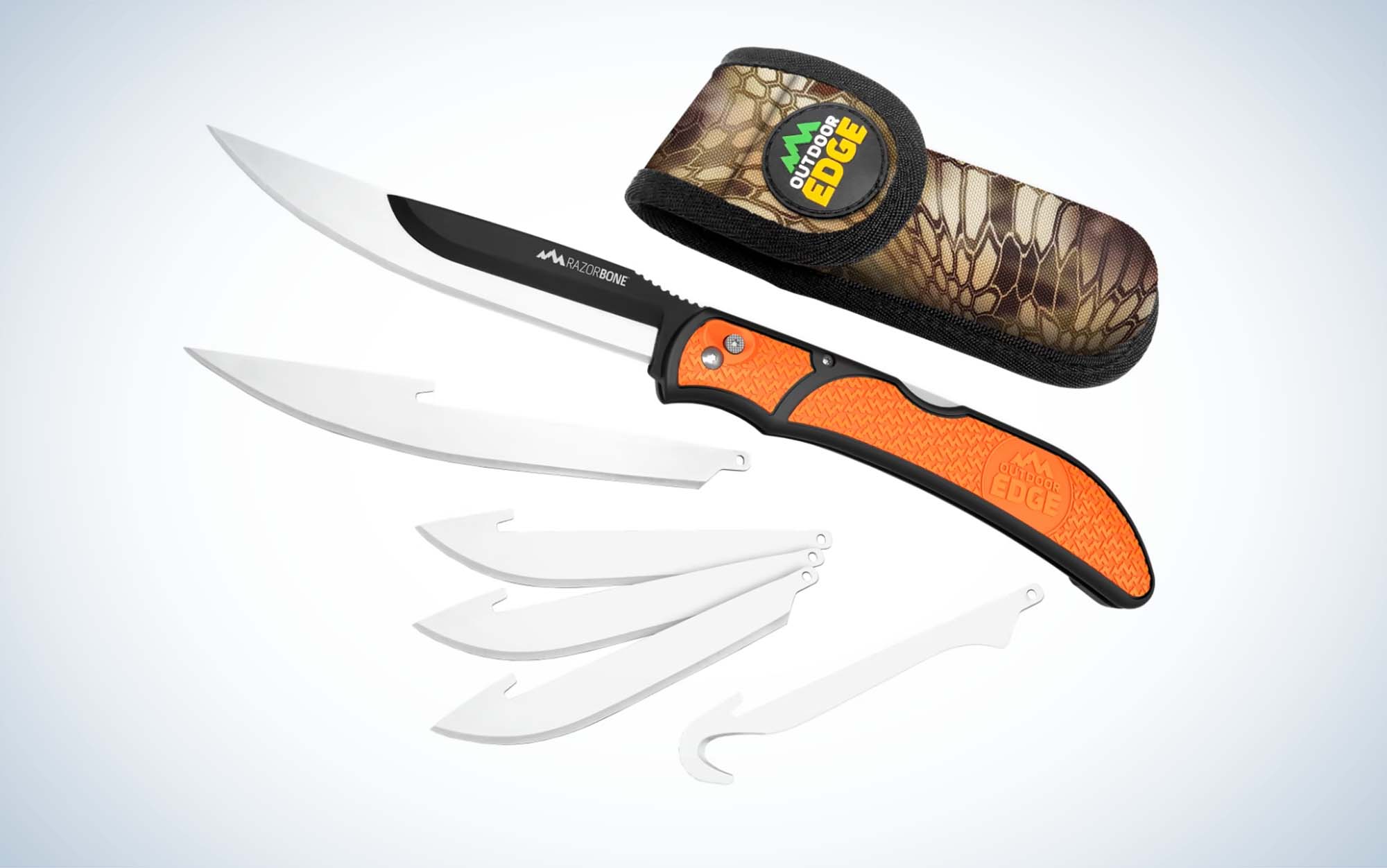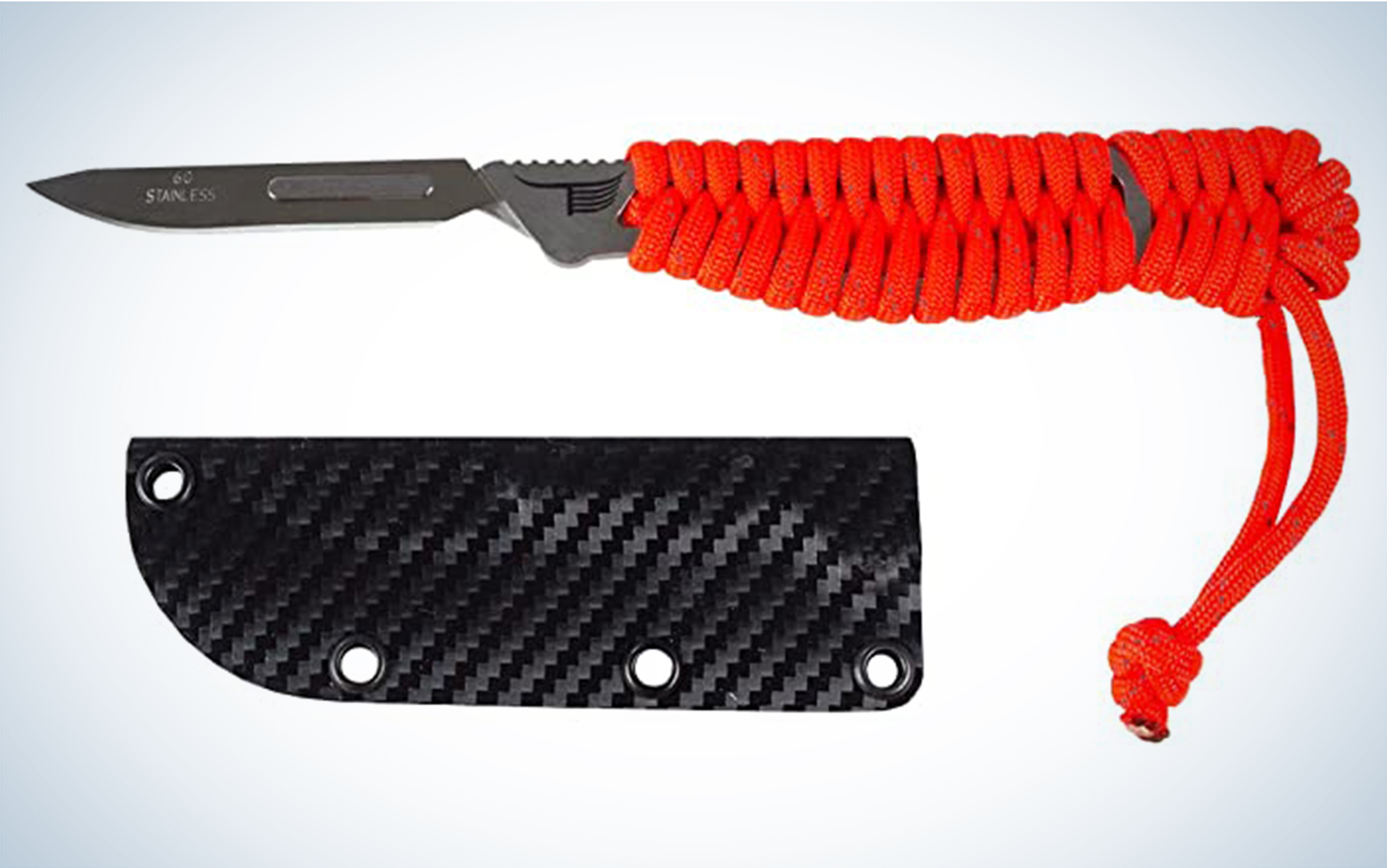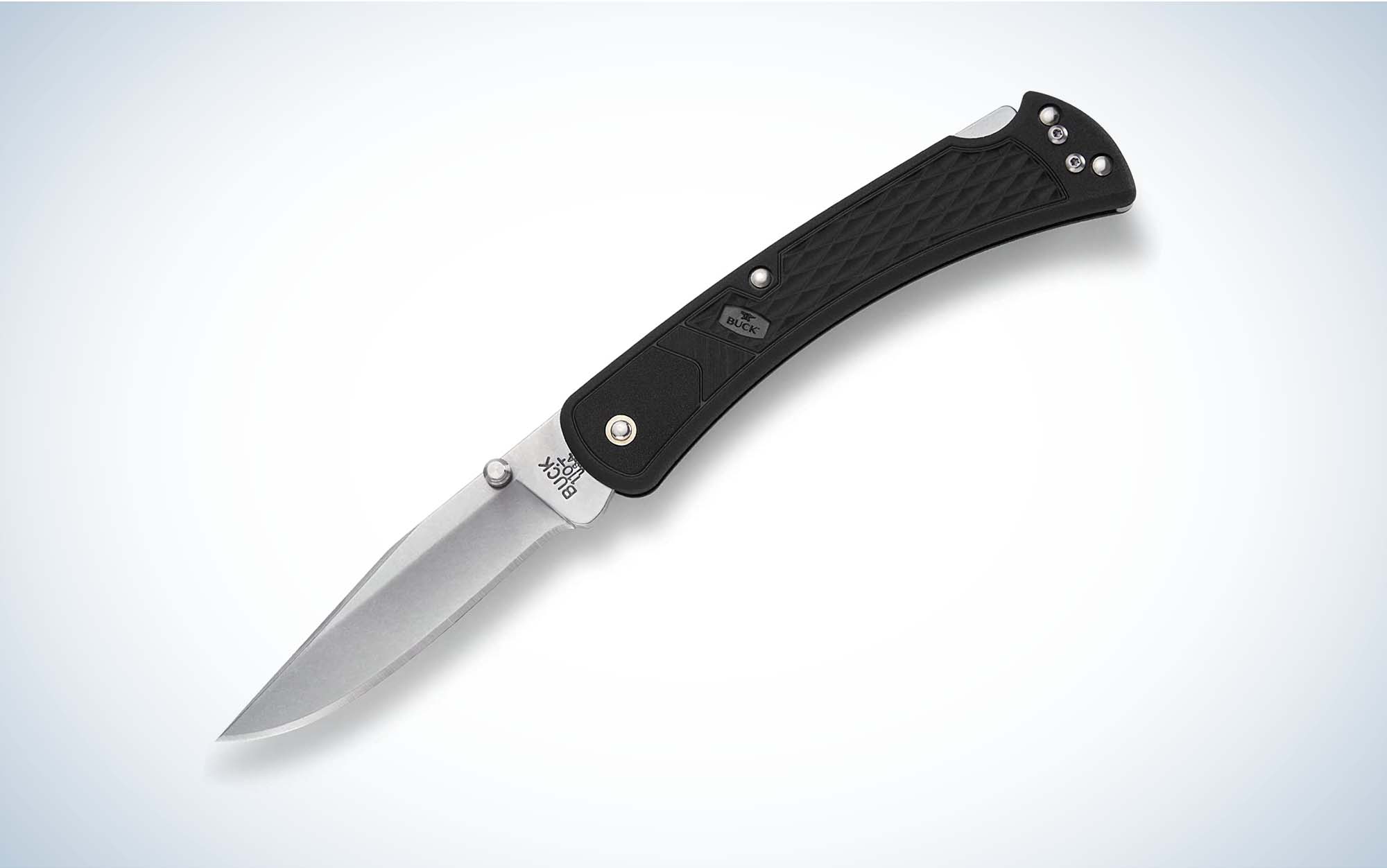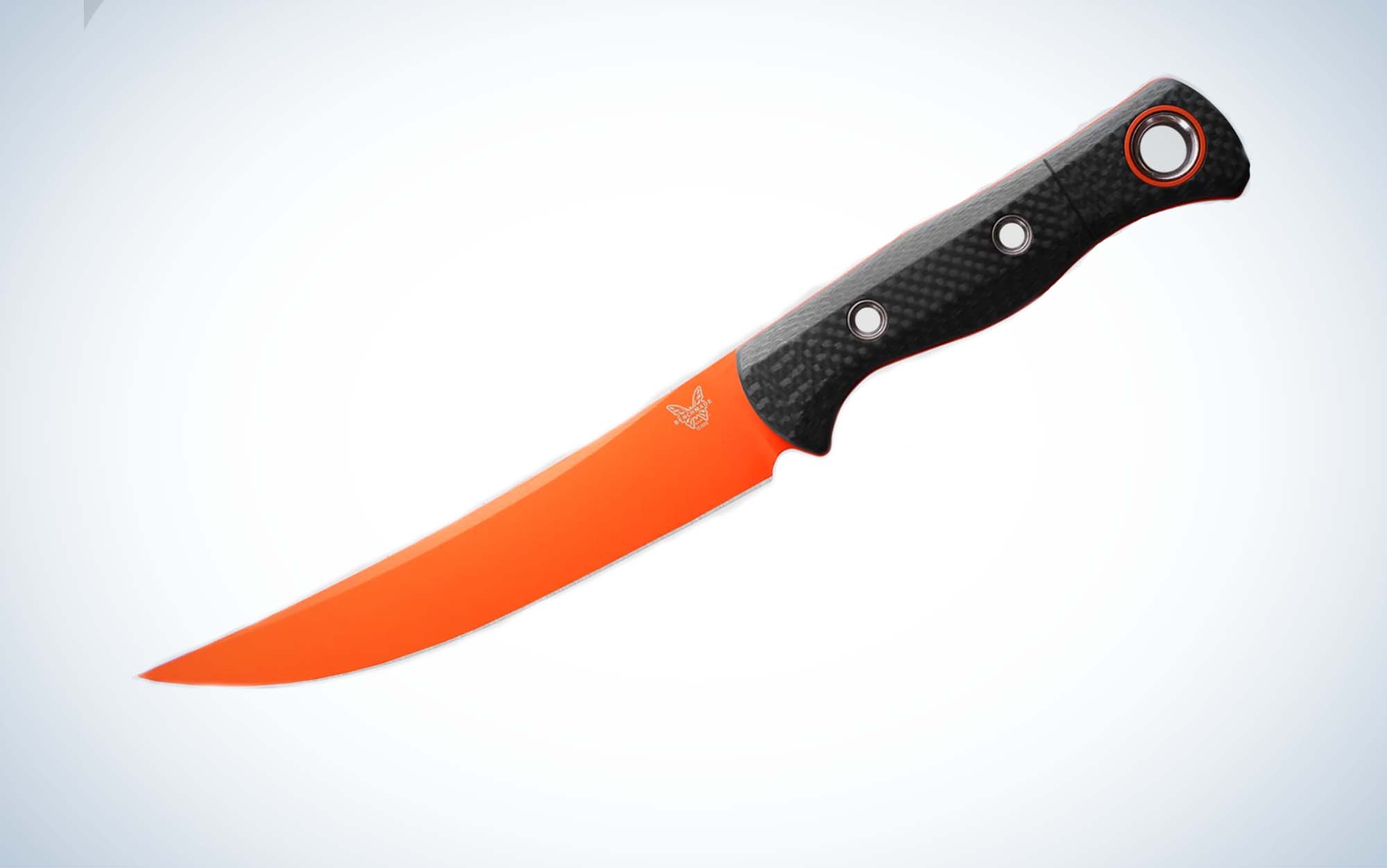We may earn revenue from the products available on this page and participate in affiliate programs. Learn More ›
Published Jun 25, 2023 9:00 AM
While I love the flavor provided by bone-in cuts, oftentimes laws, freezer space, or weight savings necessitate deboned meat. A good boning knife allows you to make precise and powerful cuts that separate meat from the bone. Bad boning knives make butchering a chore with their quickly-dulling edges, inefficient blade design, and cramp-inducing grips.
I’ve used my years of restaurant and home butchery experience to help you choose the best boning knives for use in the field or while butchering at home.
How I Chose the Best Boning Knives
You don’t need a fancy knife to debone a deer, elk, or any farmed meat. A $12 Dexter-Russel boning knife will get the job done, and many pros use them. The knives I’ve selected are either lighter and more packable for field use or have ergonomics that I prefer over the ubiquitous Dexter-Russel.
Best Boning Knives: Reviews and Recommendations
Best Large Knife: Bubba 7-inch Tapered Flex
Key Features
- Stainless Steel
- Blade Length: 7 inches
- Overall Length: 13 inches
- Rubber handle
- Includes sheath
- Price: $75
Pros
- Good ergonomics
- Flexible blade
Cons
- Needs to be touched up throughout butchering
Bubba filet knives are great for fish, but they’re also one of my favorite blades for deboning game. The thin, sharp knife slices thick cuts easily. The winning feature is the blade’s flex, which is helpful when working right up against the bone. I use mine to remove an entire backstrap in two continuous cuts, using the bone as a guide. I want to clarify that while some flex is helpful, too much flex can make it hard to control your cuts. That’s why I wouldn’t recommend the Bubba Ultra Flex series.
The 7-inch blade length is a nice size for steaking roasts. The grip is comfortable and secure, even when coated in blood. The edge retention is not spectacular, but I touch my Bubba up with a ceramic honing rod throughout the butchering process, especially if I touch the edge to a bone. The blade isn’t fully stainless, so be sure to wipe it down after use to avoid spot rust. If you’re looking for the best boning knife to use for fish and game, this is a great option.
Read Next: Best Knife Sharpeners
Best Traditional: Misono Hankotsu
Key Features
- Molybdenum Stainless Steel
- Blade Length: 5.7 inches
- Overall Length: 10.2 inches
- Wood handle
- Made in Japan
- Price: $76
Pros
- Designed for efficient butchering
- Easy to resharpen
- Molybdenum steel resists corrosion and pitting
Cons
- A purpose-built knife that’s utility is limited to butchery
My parents had a Japanese steakhouse, and ever since I could hold a tray, I worked every job in the restaurant. When we would get large cuts of beef we’d break them down using Hankotsu boning knives, and that classic design is also useful for wild game.
You can use a number of grip styles with a Honkatsu, but when making power cuts, you’re supposed to use a reverse grip. That grip allows you to use your whole body to make cuts and is less tiring than using just your arm muscles. The blade also has a concave side to reduce surface friction on the blade.
Best for the Backcountry: Benchmade Flyway
Key Features
- Steel: CPM-154 at 58-61 HRC
- Blade Length: 2.7 inches
- Blade Thickness: 3/32 inches
- Weight: 2.1 ounces
- Overall Length: 7 inches
- G10 Handles
- 14-degree bevel
- Kydex sheath
- Made in USA
- Price: $180
Pros
- Good ergonomics
- Good edge retention
- Light
Cons
- Small blade requires multiple cutting strokes for deboning thick pieces of meat
I used the Flyway last year to field dress, butcher, and debone an entire deer without touching up the blade. Two days later, I used it to butcher pheasants, and afterward it was still sharp enough to push cut paper. Since then, it’s been my favorite hunting knife, and it’s even a handy EDC fixed blade. The things that make it so great for boning are its ergonomic, sculpted G10 grip and slicey blade.
The blade has a drop point and plenty of belly for making deep cuts. While field dressing, the fine point, and slight drop were perfect for making the initial cut where the knife edge is facing up as you slide the knife under the skin. The length makes it easy to control, and when you reach into the chest cavity, it’s easy to know where your knife is.
According to Knife Steel Nerds, the CPM 154 used in the Fly Way is known for good edge retention, and it’s tougher than S30V. The toughness makes it a great steel choice for a thin knife.
My only complaint is that the sheath is considerably bulky for such a small knife. That makes the Flyway less convenient to carry in a bino harness or pants pocket. Even with that con, it’s my pick for the best boning knife to carry in the field.
Read Next: Best Hunting Knives
Best Value: Outdoor Edge Razorlite and RazorBone
Key Features
- Blade Length: 3.5 inches (Razorlite) and 5 inches (RazorBone)
- Blade Steel: Japanese 420J2 Stainless
- Nylon pouch
- Weight: 6.4 ounces (Razorlite)
- Overall Length: 8 inches (open)
- Price: $40 (Razorlite)and $50 (RazorBone)
Pros
- Easy to replace blades
- Good blade shape
Cons
- Heavier than some replaceable blade knives
Last year I found myself on the side of a mountain with five others trying to break down two elk as quickly as possible, before the two grizzly bears over the ridge got too interested in us. Everyone had different replaceable blade knives, but about halfway through the first elk, it was obvious which of the knives was the best—the Razorlite. Its blades were the easiest to replace, and the mounting system was trouble-free. Other knives got gummed up, and the blades came off, but the RazorLite zipped through deboning two elk.
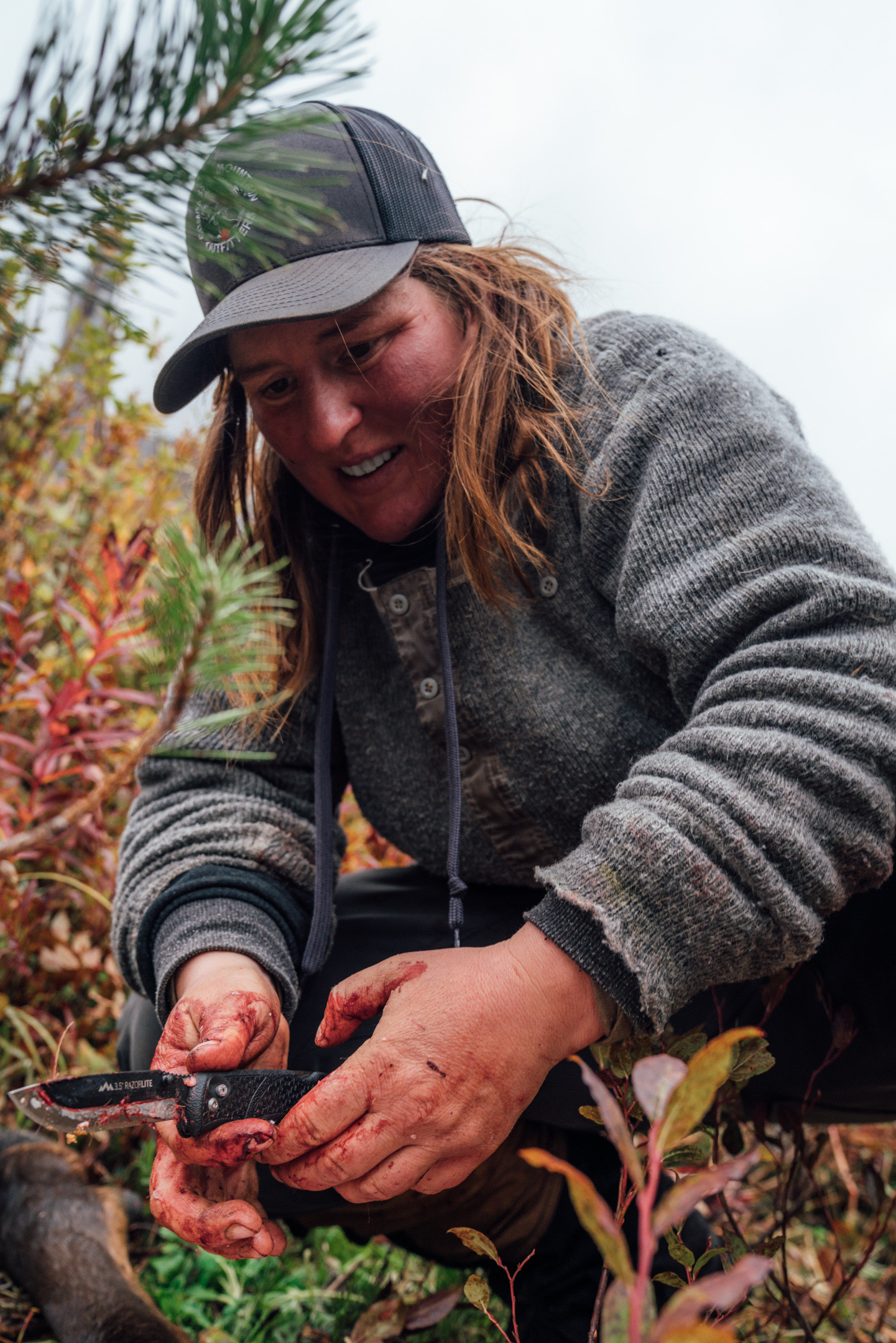
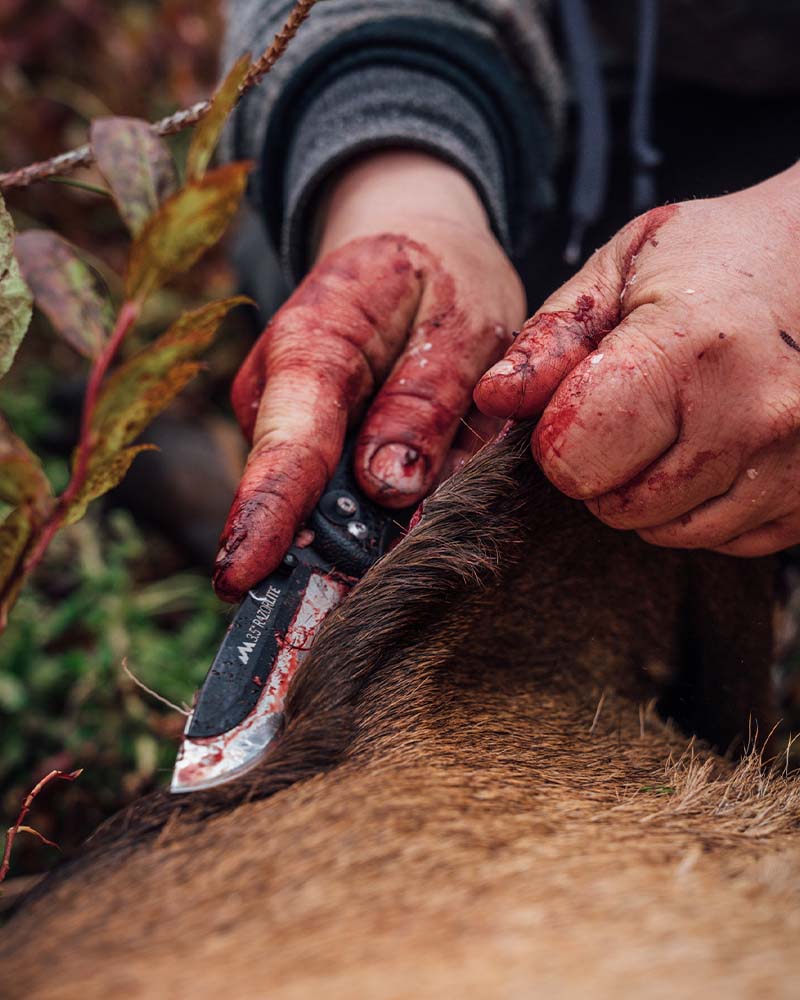
That’s an important consideration because while a number of replaceable blade knives will excel at field dressing, butchering is usually soon to follow. It’s nice to have a knife that does both well.
While the RazorLite isn’t the lightest replaceable blade knife—5.9 ounces heavier than a Tyto. It’s the most trouble-free design I’ve used. I don’t have blades pop off or break, and I can make it through an animal on one blade. When it’s time to swap a blade, you just press the button, slide the blade out, and slide a new blade in. The rubberized grip stays grippy when your hands are covered in blood. The 3.5-inch blade is a good length for balancing maneuverability and cutting efficiency.
The RazorBone uses the same blade system as the RazorLite with a longer blade that’s perfect as a dedicated butchering blade. It would be my choice for the best boning knife with a replaceable blade for home use.
Best Ultralight: Tyto 1.1
Key Features
- Weight: 1.5 ounces (handle, one blade, and sheath)
- Overall Length: 7.5 inches
- Width: 1 inch
- Thickness: .120 inch
- Uses size 60 replacement blades
- Made in the USA
- Price: $104
Pros
- Light
- Easy to carry
- Good ergonomics
Cons
- Blades can pop off with side pressure
A Tyto and spare blades ride in my bino harness and only come out when it’s time to put them to work. When the knife isn’t in use, I don’t even notice it, and that’s where the Tyto shines. It’s a minimalist knife that’s exceptionally light and slim.
The blades pop into place easily, and one blade will stay sharp throughout the field dressing. But you’ll eventually need to replace your blade if you’re deboning and skinning. That’s best done with a pair of pliers, the Havalon Blade Remover, or by sticking the blade into a piece of wood.
The sharp jimping on the spine provides a non-slip grip and an index point. While I’ve never felt the need to wrap mine in paracord or add scales, you have that option for even more grip traction.
Best Folder: Buck 110 Slim
Key Features
- Blade Length: 3.75 inches
- Overall Length: 8.6 inches (4.8 inches folded)
- Stainless 420 steel with BOS heat treat
- Lockback
- Glass Filled Nylon (GFN) handle material
- Weight: 2.8 ounces
- Price: $43
Pros
- Lightweight
- Under $50
- Made in the USA
Cons
- Not ideal for hard-use tasks
I own the original Buck 110, a fixed blade 110, and the newer 110 Slim. They’re all iconic hunting knives that have proven themselves through hard use by countless outdoorsmen. The best knife for field dressing among the 110 line is the 110 slim, because it’s light, is easier to open thanks to the addition of thumb studs, and blood effortlessly washes off the GFN handle. Fans of the original will be happy to learn that it maintains the classic, and rock solid, lockback design and endlessly useful clip point blade. It’s also one of the few knives under $50 that are made in the USA.
Buck Knives opened up shop in 1902, just four years after Outdoor Life, and have had a loyal following ever since. If you’re looking for a classic that won’t hurt the wallet or weigh you down, you can’t go wrong with the 110 Slim.
Best High-End: Benchmade Meatcrafter Carbon Fiber
Key Features
- CPM-S45VN Stainless Steel
- Blade Length: 6 inches
- Overall Length: 11 inches
- Carbon fiber handle
- Includes sheath
- Price: $450
Pros
- Cerakote blade
- Blade is slightly flexible
- Striking aesthetics
- Good ergonomics
Cons
Benchmade took the classic 6-inch boning knife and added a bunch of high-end features to create a tricked-out model that’s about 12 times more expensive than the standard. This knife will do all the same tasks as a plain-Jane boning knife, but it will do them with flash and style. If that kind of thing matters to you, then this knife just might be worth it.
The carbon fiber handle is light and comfortable in-hand. The orange cerakoted blade is flexible enough to work around joints but not so bendy that you give up cutting power. Even the Kydex sheath looks cool, with black on one side and blaze orange on the other. I’ve used one for several seasons now to butcher half-a-dozen deer and at least a dozen turkeys. It’s my go-to knife anytime I’m working on quarters. The knife is light enough (6.2 ounces including the sheath, which is less than the Razorlite) that you could pack it into the backcountry if you wanted a true boning knife up on the mountain. But in my opinion, this bad boy belongs in the kitchen or the garage at butchering time. —Alex Robinson
How to Choose a Boning Knife
There are a few key attributes I look for in a boning knife including blade length, steel, ergonomics, and blade flex.
Blade Length
Unlike the best knives for field dressing, a longer blade can be beneficial for deboning. More surface area means you can make deep cuts right to the bone in one swipe. However, if you’re packing the knife into the backcountry, a long blade isn’t practical.
Steel
When butchering at home, a softer carbon steel that dulls quickly but is easy to resharpen isn’t a disadvantage. In fact, I prefer them over super steels that hold an edge longer, but are difficult to sharpen. In the field where you don’t have a sharpener handy, a replaceable blade knife or one that holds an edge is preferable.
Ergonomics
Butchering isn’t a fast task, and a knife with good ergonomics is a huge benefit. You’ll have fewer hand cramps and the whole process will be more enjoyable. Look for a knife that doesn’t force your hand into a particular position so that you can choose the best grip for the task. I also like grips that prevent slipping with their design, material, or texture.
Flexible Blade
Bones aren’t perfectly flat, and it’s helpful to have a knife that can conform to the bone’s shape while cutting away the meat. Just keep in mind that a knife that’s too flexible can struggle to make precise, straight cuts.
Read Next: How to Cook Venison: The Best Ways to Prepare Every Cut
FAQs
Is a curved or straight boning knife better?
A curved edge aids in slicing meat and is commonly utilized in boning knives.
What steel is best on a boning knife?
An easy-to-sharpen carbon steel blade is ideal for a boning knife.
What size boning knife should I get?
A 5- to 7-inch blade is a good balance between cutting efficiency and control.
Why Trust Outdoor Life?
Since 1898, OL has been a leading authority in testing and reviewing hunting gear, fishing tackle, guns and shooting equipment, and much more. We have more than a century-long history of evaluating products, and we’re now bringing that expertise to online reviews. Our editors are experienced outdoorsmen and women, and most importantly, we’re trained journalists. We prioritize field testing and objective data when reviewing products. We conduct interviews with gear manufacturers and engineers as well as outdoor experts so that our readers have an understanding of how and why a product works—or doesn’t.
Advertising does not influence our gear reviews and it never will. While we always focus our coverage on standout products—because we want our readers to be aware of the latest and greatest gear—we also cover the flaws and quirks of any given product.
Final Thoughts on the Best Boning Knives
The best boning knives allow you to efficiently carve meat off the bone. You can use an inexpensive knife to get the job done, but if you’re interested in investing in a lighter or higher-quality option, check out one of my recommendations.

